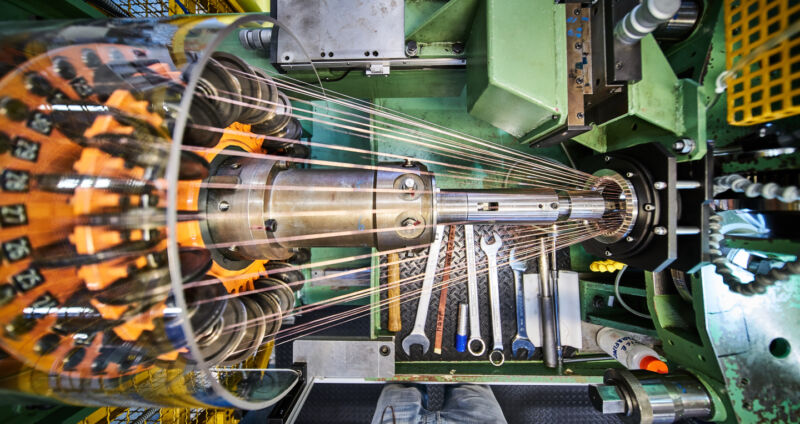Europe officially sets its sights on a giant LHC successor

Enlarge / CERN makes its own superconducting wiring for the successor to the LHC. (credit: CERN)
The Large Hadron Collider, the most powerful particle collider humanity has ever built, resides in an enormous, 27-kilometer-long tunnel that extends under the Swiss and French countrysides. What's often overlooked is that the tunnel was built for an earlier piece of hardware, the Large Electron-Positron collider, or LEP. LEP had been built specifically to provide a clean way to study the Z boson; only later was it converted to a higher-energy proton collider that enabled the discovery of the Higgs boson.
Now, Europe is officially committing to taking a similar approach: building a huge tunnel at the CERN facility that will collide particles to enable a clean study of the Higgs boson. But Europe is leaving the option of using the tunnel for a future collider that could reach energies nearly 10 times higher than the LHC.
Electrons vs. hadronsElectrons and positrons are fundamental particles; as far as we know, they have no smaller particles that comprise them. That makes their collisions extremely clean. The protons collided by the LHC, in contrast, are composed of a collection of quarks and gluons, making their collisions a complicated collection of sub-collisions that can be challenging to interpret.
Read 15 remaining paragraphs | Comments